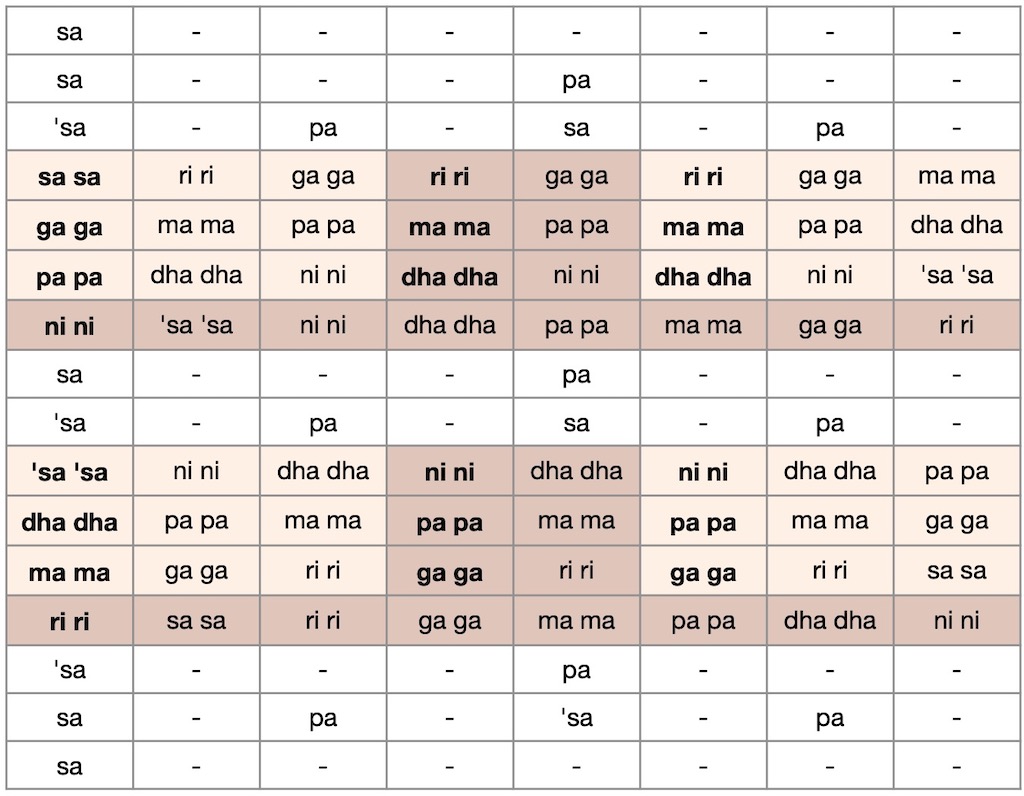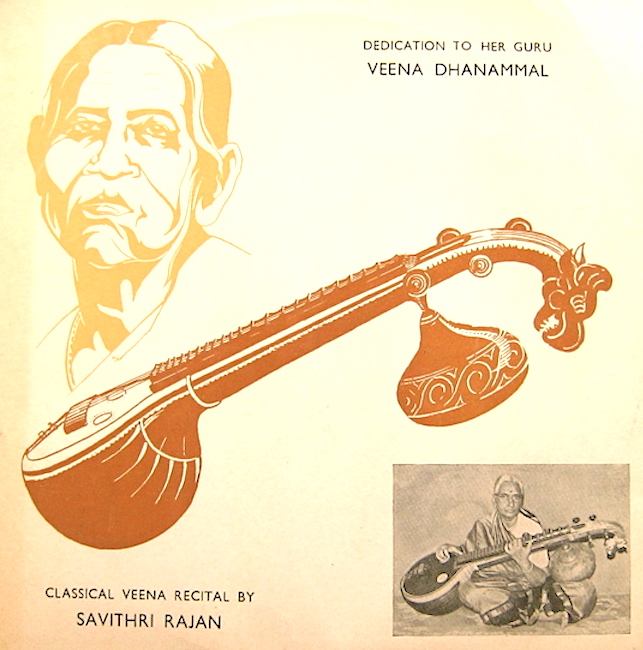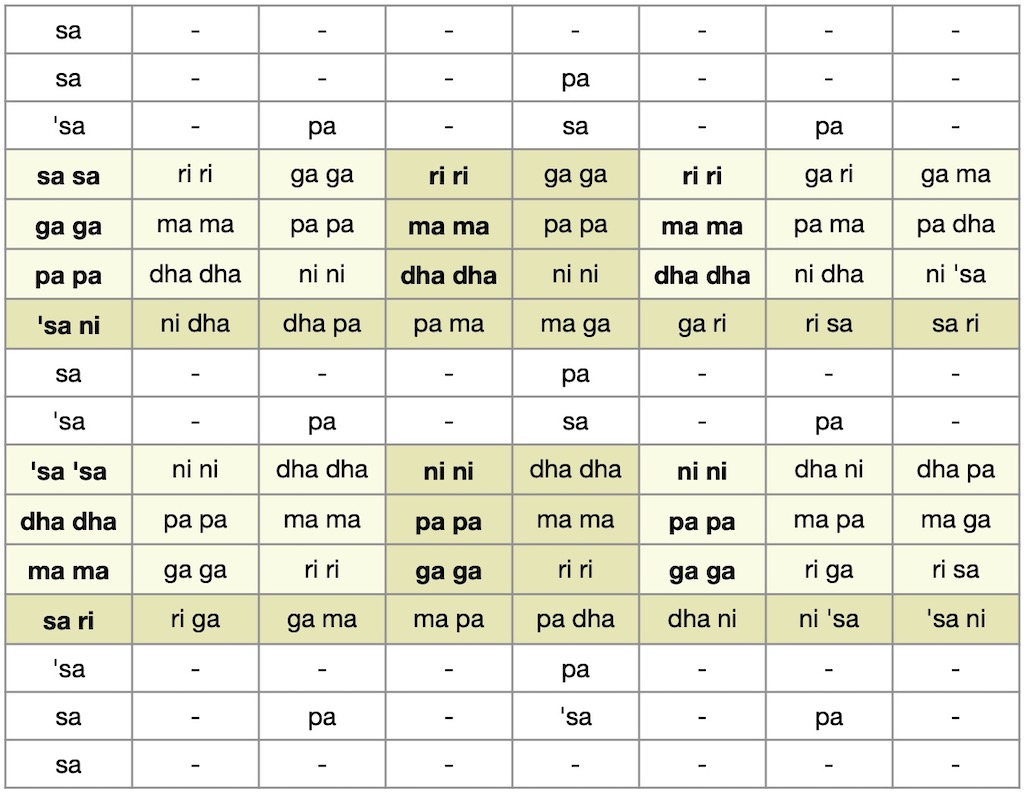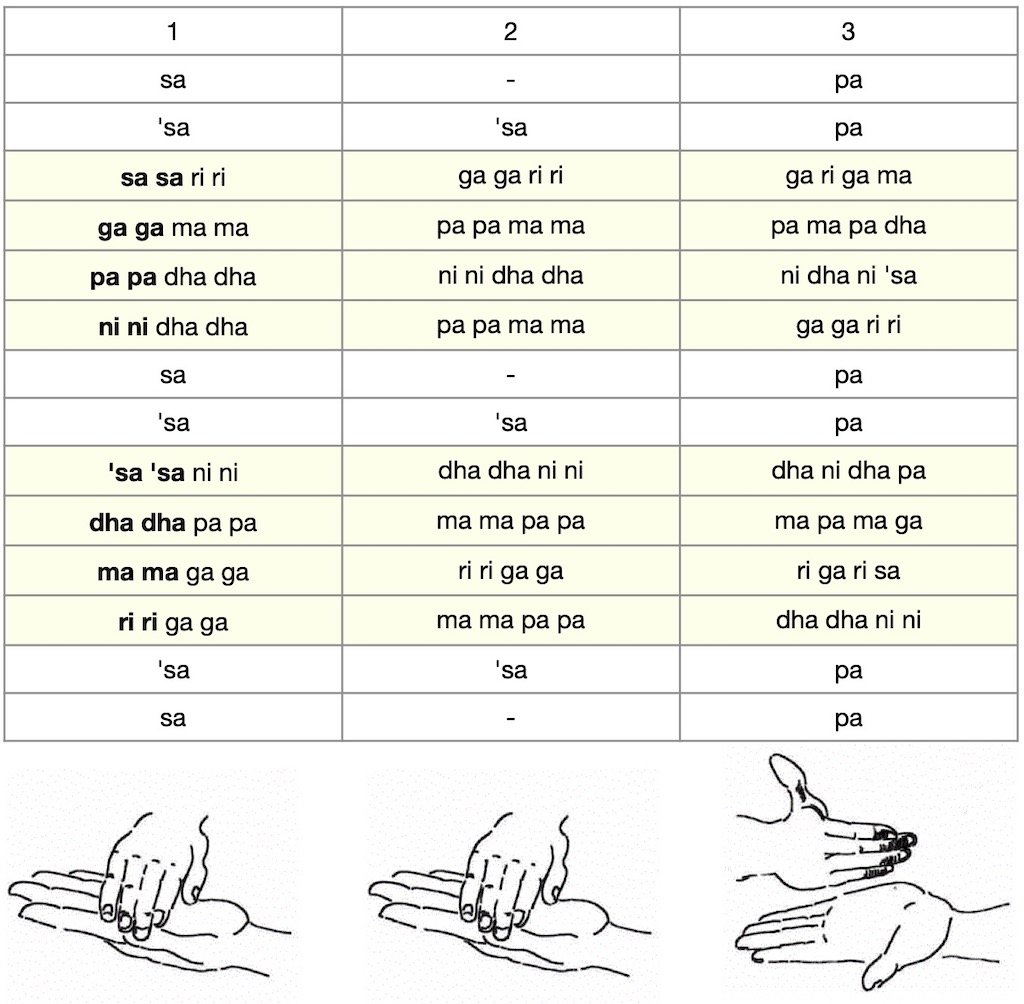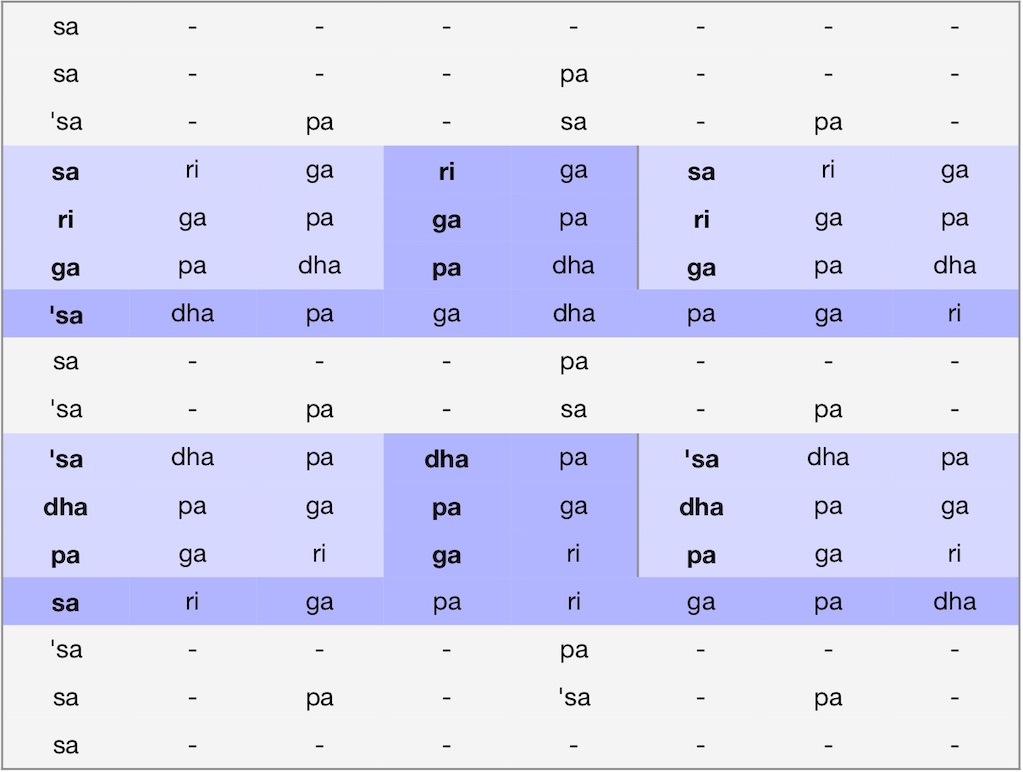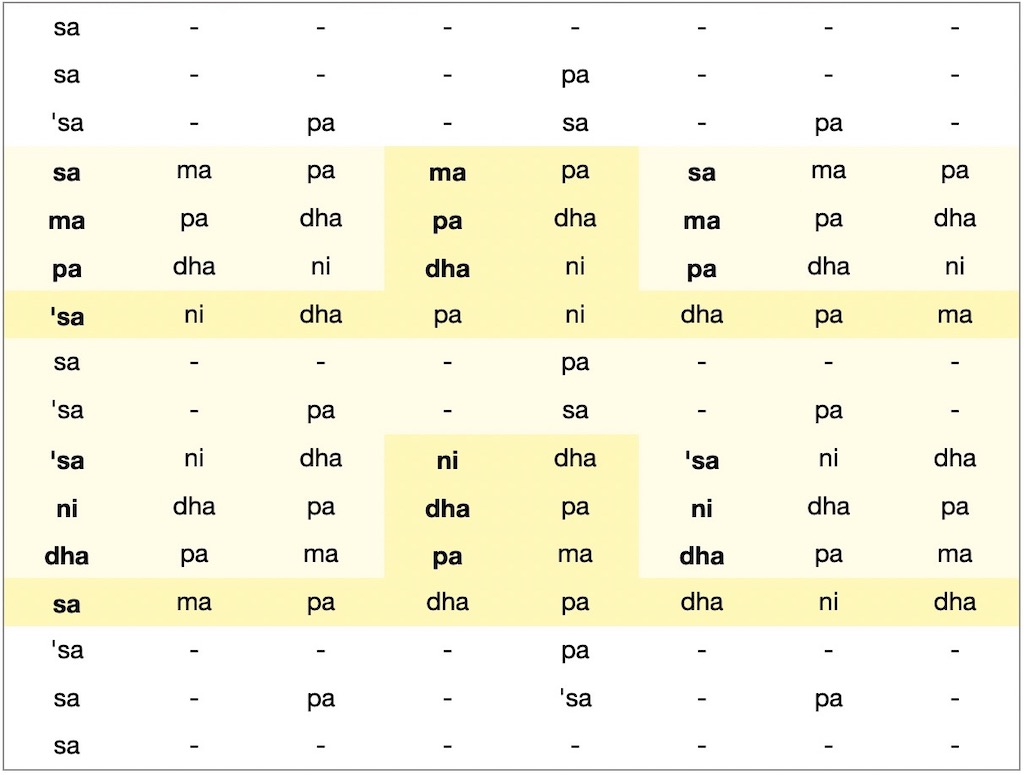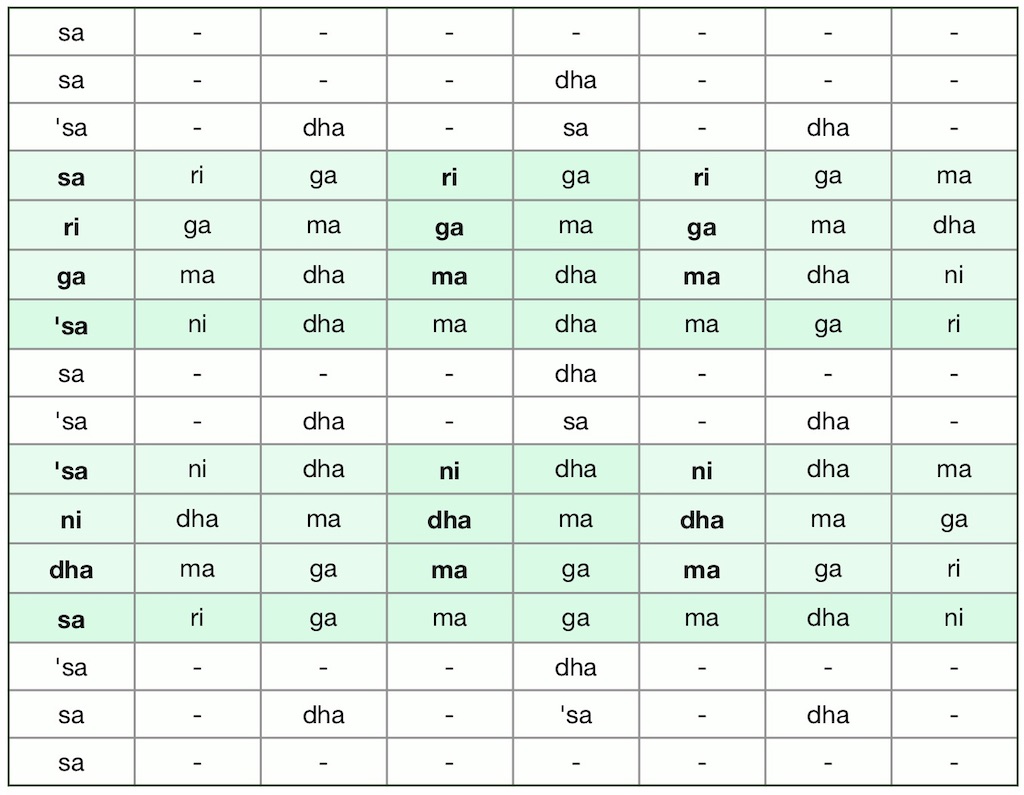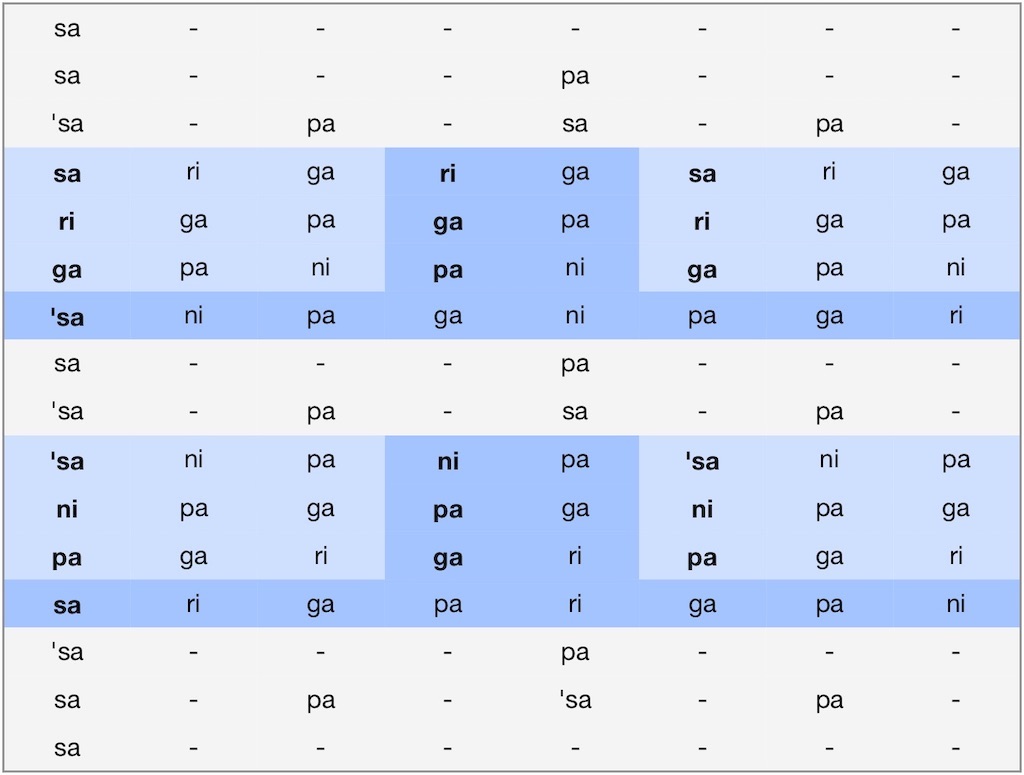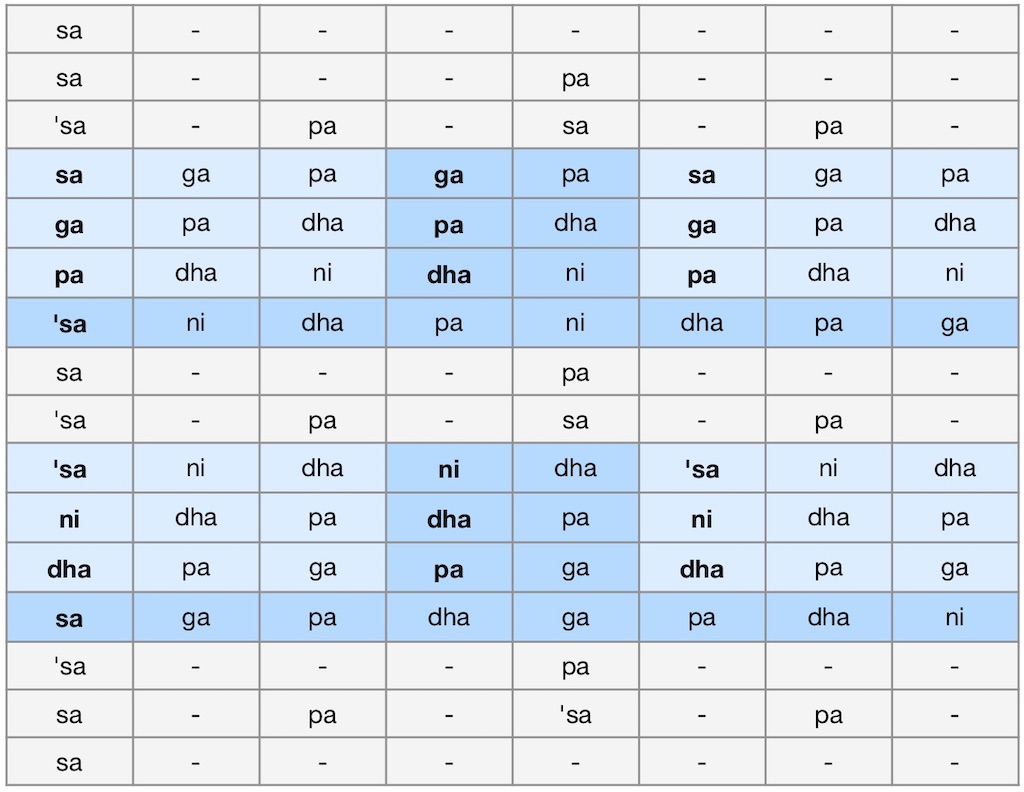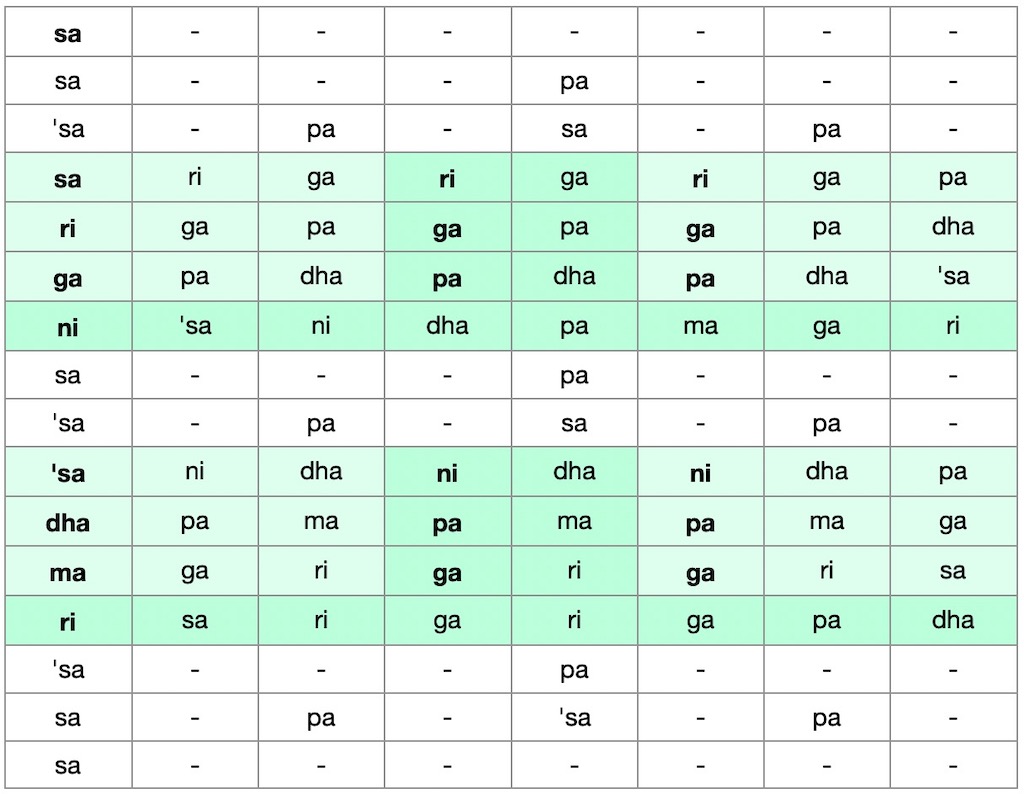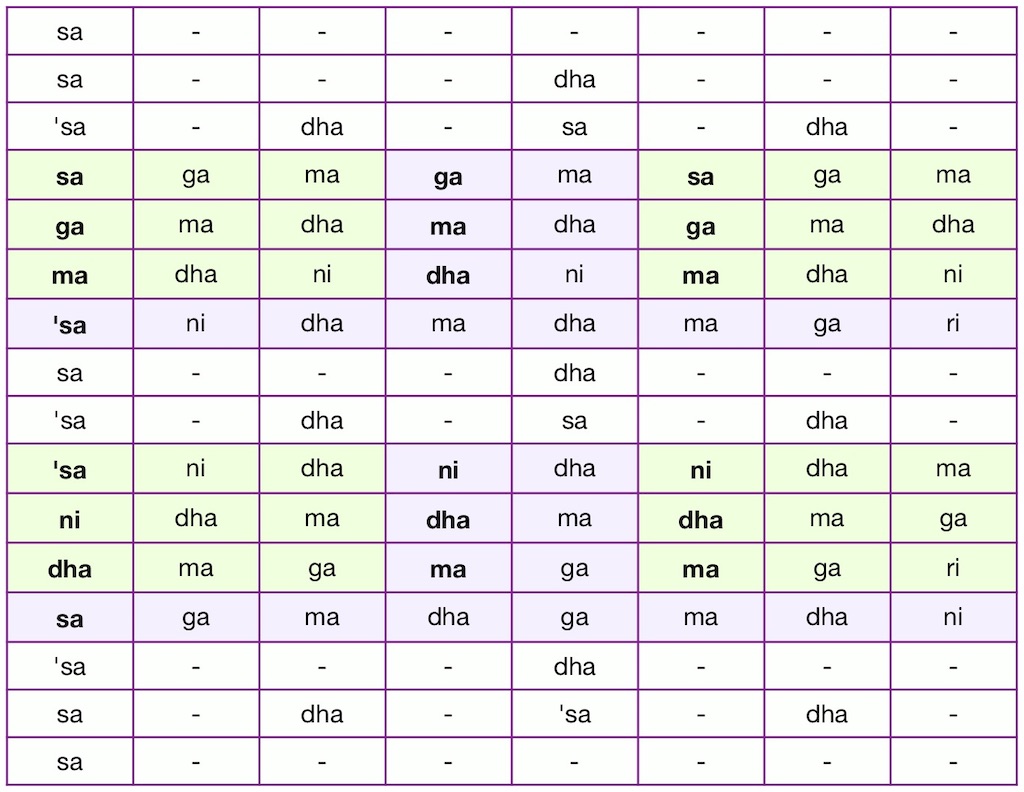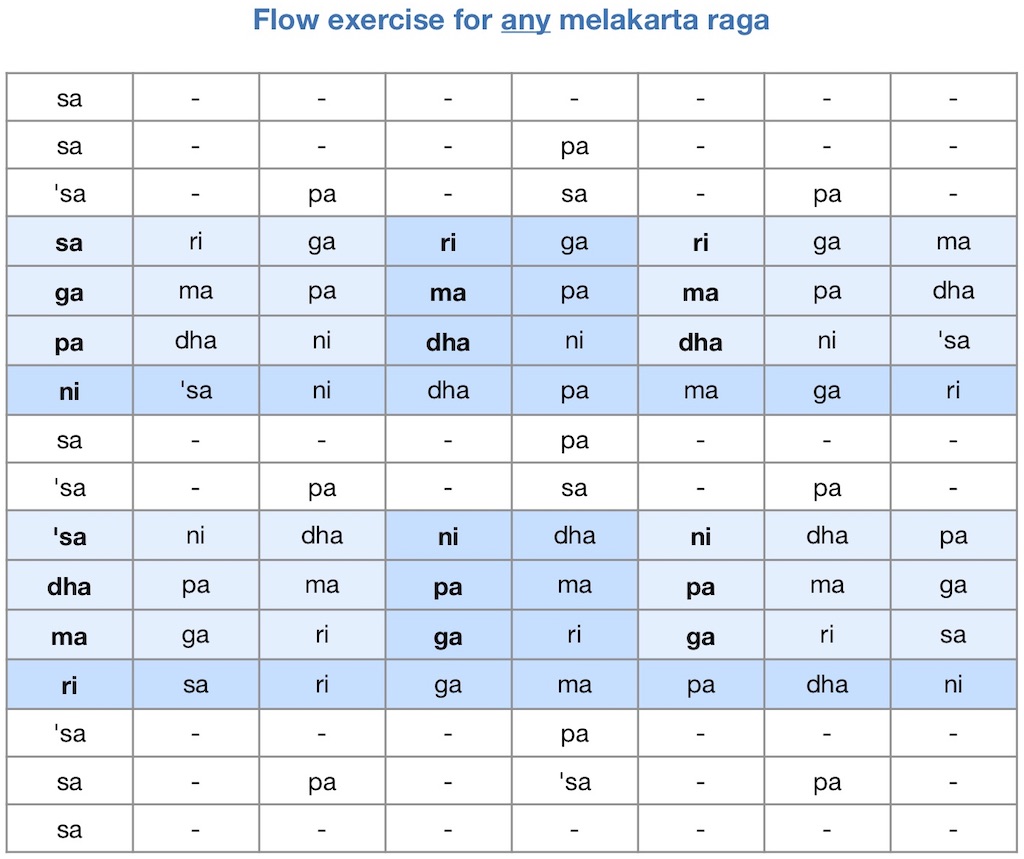
Explore renditions of raga Mayamalavagaula, raga (Dhira)Sankarabharanam and raga (Meca)Kalyani on YouTube >>
Listen to two kritis in ragas
Simhendramadhyamam and Sankarabharanam (6th and 7th items)
sung by Bhushany Kalyanaraman >>
Find song lyrics (composers) & translations for these and other ragas >>
“Flow” exercises
A series of “Flow” exercises invites learners to practice all the 72 musical scales of Carnatic music (“mela” or mēlakarta rāga). It is meant to supplement the comprehensive standard syllabus (abhyāsa gānam) attributed to 16th c. composer Purandara Dasa.
Repeated practice need not be tedious; instead it instantly turns joyful whenever we remind ourselves that Indian music “is created only when life is attuned to a single tune and a single time beat. Music is born only where the strings of the heart are not out of tune.” – Mahatma Gandhi on his love for music >>
As regards “time beat” in Carnatic music, the key concept is known as kāla pramānam: the right tempo which, once chosen, remains even (until the piece is concluded). | Learn more >>
Music teachers will find it easy to create their own versions: exercises that make such practice more enjoyable. | Janta variations >>
Concept & images © Ludwig Pesch | Feel free to share in accordance with the
Creative Commons Attribution-NonCommercial-ShareAlike license >>
Become fluent with the help of svara syllables (solmisation): practice a series of exercises, each based on a set of melodic figures that lend themselves to frequent repetition (“getting into flow”) | Practice goal, choosing your vocal range & more tips >>
South Indian conventions (raga names & svara notation): karnATik.com | Guide >>
raagam: mAyAmALavagauLa
Aa: S R1 G3 M1 P D1 N3 S | Av: S N3 D1 P M1 G3 R1 S
raagam: shankaraabharaNam
Aa: S R2 G3 M1 P D2 N3 S | Av: S N3 D2 P M1 G3 R2 S
raagam: kalyANi
Aa: S R2 G3 M2 P D2 N3 S | Av: S N3 D2 P M2 G3 R2 S
Listen to Uma Ramasubramaniam demonstrating the svaras (notes) for the present raga(s) on Raga Surabhi >>
Note: this recording has no fifth note “Pa”
(as advised for those janya ragas wherein “Pa” will not be sung or played)
Download this audio file (2 MB, 2 min. mono)
Credit: eSWAR / FS-3C Sruthi petti + Tanjore Tambura
The above svara pattern may be sung, hummed or practiced silently with any svara variants: those you are already familiar with (e.g. raga Mayamalavagaula, mela 15, raga Dhirasankarabharanam, mela 29, raga Mecakalyani, mela 65) or any other you want to practice.
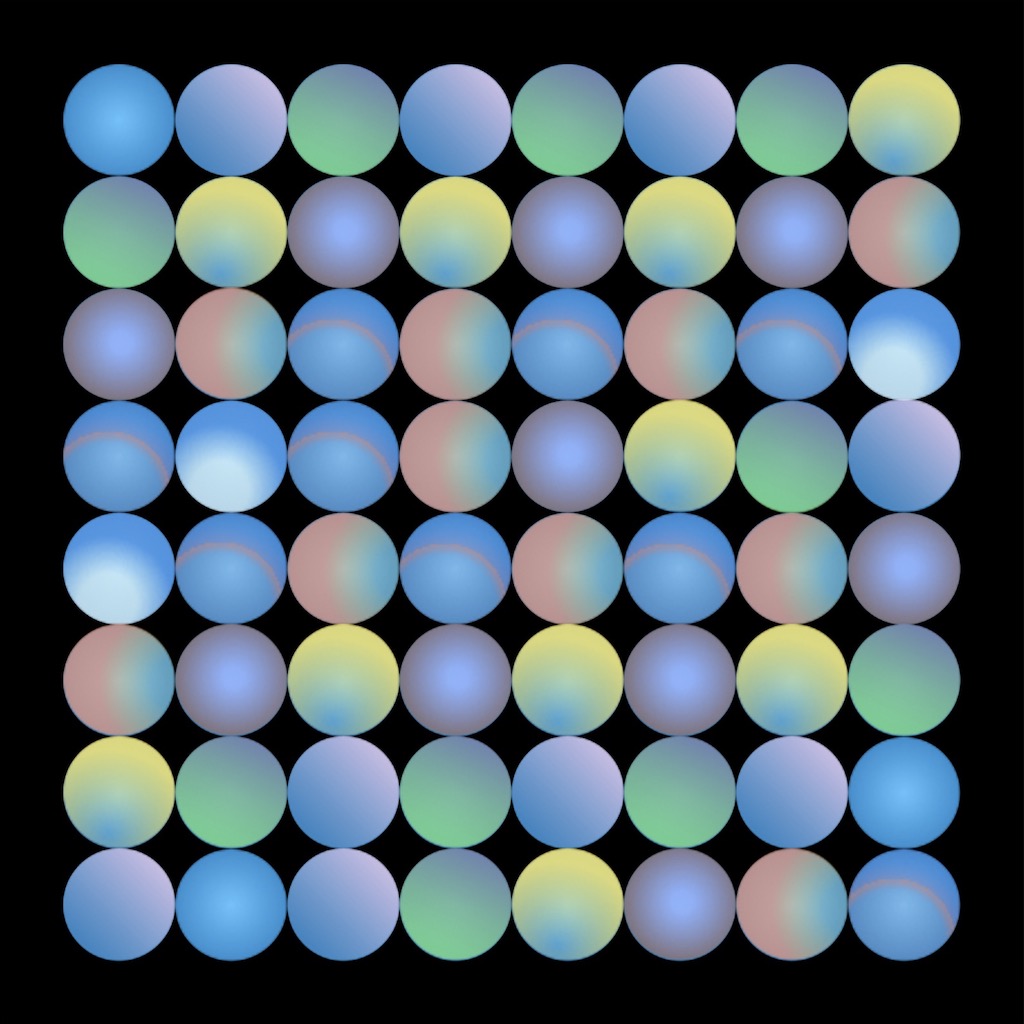
Once internalized you may want to contemplate and remember the same exercise with the help of the “8 x 8 beads” pattern shared here >>
Enjoy practicing by way of gradually getting into a state of flow: deep concentration while feeling completely absorbed by an activity.
And with a rich store at our fingertips in the digital age, let’s remind ourselves that there really is no such thing as a ‘learner’ raga’; a fact that sets us free to explore any raga with a sense of wonder: through joyful – active – involvement, whatever level or age group we happen to occupy!
The long-term goal is to become fluent in all the 72 melakarta ragas (including those rarely heard). In this manner it becomes easier to recognize both, melakarta and janya ragas, by distinguishing their characteristic notes even when modulated or “embellished” in accordance with classical conventions (gamaka). Their application is demonstrated in an elegant, highly instructive video (duration: 7 min.): The 13-part Sanskrit composition of Chitravina N Ravikiran. For a more detailed application, listen to Smt Kiranavali’s students at Cleveland Aradhana (Part 1) | Part 2 >>
Learn more and download a free mela-pocket guide here: Boggle Your Mind with Mela (BYMM) method – free mini course >>
For learners interested in staff notation for the above ragas and more, also check this course author’s reference work:
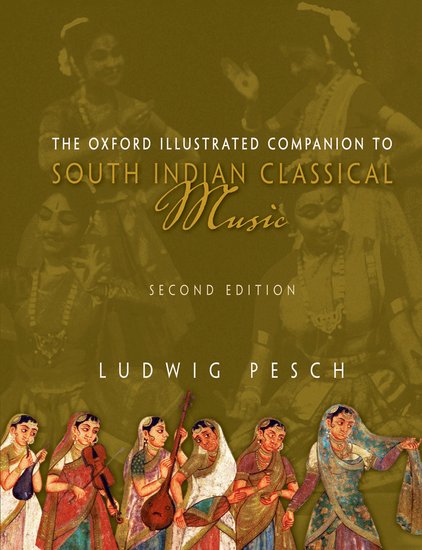
Find a copy of the Oxford Illustrated Companion to South Indian Classical Music
- on the publisher’s websites Oxford University Press India | OUP Academic (worldwide)
- in a library near you via WorldCat.org
- from an Indian distributor or online bookstore

